Kunstvlaai: Festival of Independents
In Amsterdam, the Netherlands, Kunstvlaai: Festival of Independents took place from 23 November through 2 December 2012. Over seventy independent art institutions, art schools and artist-led initiatives from the Netherlands and abroad presented themselves in a building that, until two weeks before the opening, housed a secondary school. The name ‘Kunstvlaai’ needs translating and explaining. ‘Vlaai’ in Dutch means ‘pie’. It seems an odd name for an art festival but in fact the name sums up the festival’s history. Kunstvlaai started out in 1997 as an exhibition organized by galleries and artist led-initiatives that were not admitted to the official art fair KunstRai. Kunstvlaai became the symbolic pie thrown in the face of KunstRai’s admissions board. Now, in its ninth edition, Kunstvlaaiflourishes as never before.
Kunstvlaai is a segment of the cultural field. In the soil, so to speak, between bedrock and topsoil, artist-led initiatives are the “fertile middle layer that ferments and fertilizes the cultural debate”. The quote is from Natasha Ginwala, who is co-curator with Fleur van Muiswinkel of Kunstvlaai. The assignment of curators was a change from previous years. It meant a strategic break with the festival’s ‘alternative’ image in the sense of ‘being against’ the established institutions. Instead, Ginwala and Van Muiswinkel emphasize the potential of Kunstvlaai, as expressed in the quote above. They see Kunstvlaai as “a model of models”. By this they mean that each artist-led initiative is “a case study, a model, of how to respond to the cultural climate.” Kunstvlaai gives them a platform.
The curatorial concept of Ginwala and Van Muiswinkel fits in with the school model. For an art exhibition as “a locus for learning, for passing on knowledge, experience, ideas for a future” the schoolbuilding with its classrooms was a natural setting. One characteristic of Kunstvlaaihas not changed over the years: the ambiance is created by the co-presence of the participants and the resulting exchange of ideas.
Confident that this would also characterize the 2012 edition, Ginwala and Van Muiswinkel gave the participants free rein to present themselves. The initiatives try to position themselves through trial and error; some will only exist briefly, others have a more permanent basis but essentially they all offer a room for experimentation and they create encounters, conversation, discussion.
One single visit hardly suffices to see all presentations. I had difficulty, moreover, to keep my sense of orientation as I walked through the building. The floorplan with long identical corridors spread over three wings and four floors is treacherously simple. I pitied the schoolkids who once walked through this maze looking for their classrooms and who were punished for being late. Schoolchildren, by the way, are among the new groups of visitors to Kunstvlaai. Also new to the scene are professionals working in the financial sector and law firms that are concentrated in the business district nearby. I began my two visits looking purposefully for a specific art initiative but ended up meandering in and out of the classrooms. I have selected a few presentations, below, which may give some idea of the diversity of the events and initiatives at Kunstvlaai.
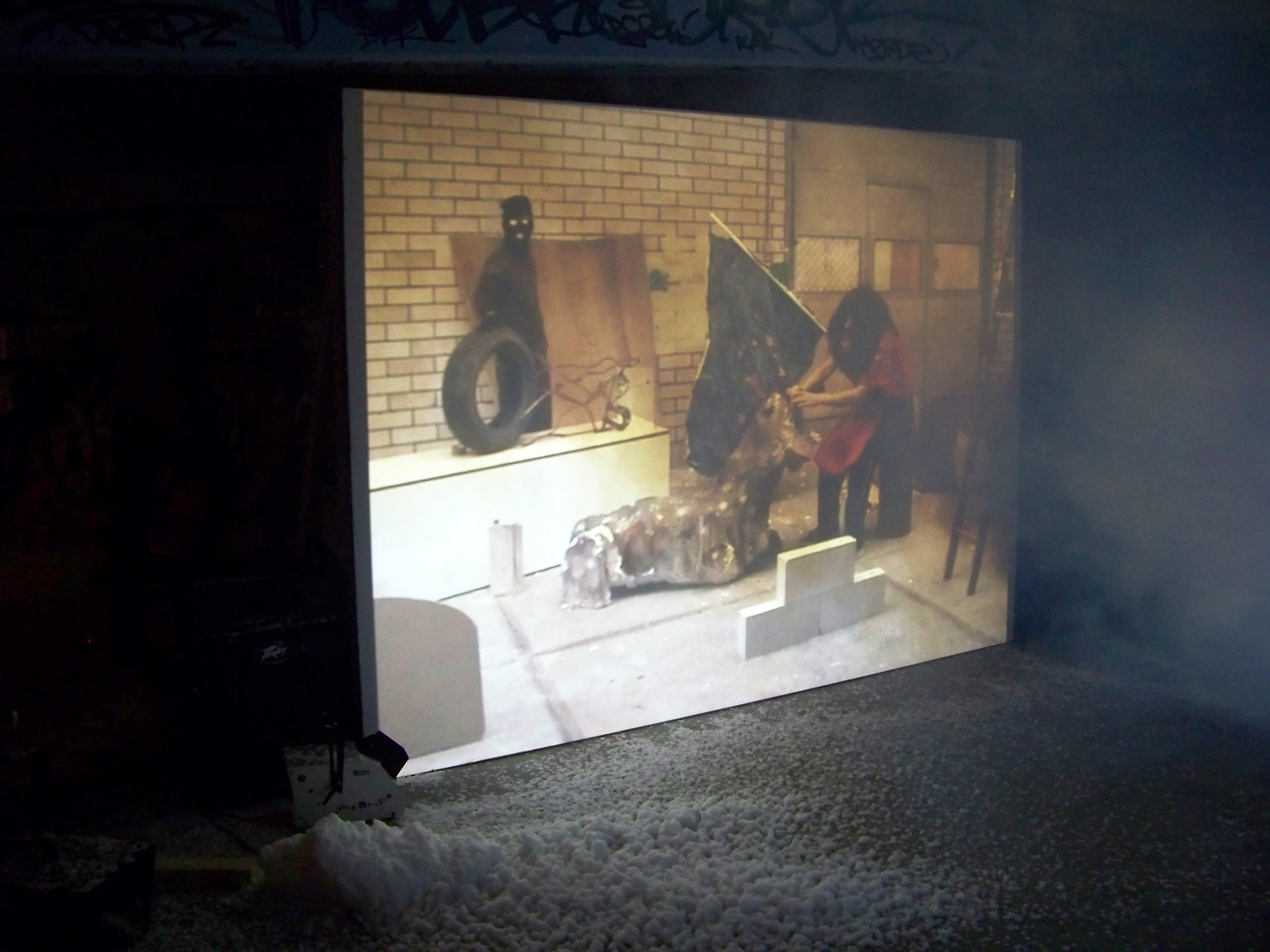
De Servicegarage (NL) Frank Koolen Photos ©De Service Garage
Around one third of the participants came from abroad. Some already had ties to an art school or an artist-led initiative in the Netherlands. CEIA (Brazil) is an example. Its founder Marco Paulo Rolla is a former resident of Rijksakademie van Beeldende Kunsten, Amsterdam. For Kunstvlaai CEIA presented a series of performances together with a modest exhibition of drawings by artists connected to CEIA. A compilation of archival performances and events organized by CEIA could be seen on video. As another resource Ginwala and Van Muiswinkel got in touch with the international conference ‘Institutions by Artists’ in Vancouver, Canada. The Arbour Lake Sghool an alternative school/artist-led initiative from from Canada participated in this conference and was invited to Kunstvlaai. Their project was a collaboration with the British School nearby whose pupils came to the ‘classroom’ to invent objects.
De Service Garage (Netherlands) invited Halbe beer brewery to co-produce its presentation because it has an affinity with the way in which Halbe brewery positions itself in the artistic field. Halbe was founded by artist Teun Castelein as “a new idealistic brand of beer whose full profits go to sponsoring art” (http://halbebier.nl/info). It is named after former Culture Secretary Halbe Zijlstra who made himself unpopular with subsidies- and budget cuts to cultural institutions. The co-production with Halbe at Kunstvlaai resulted in a turbo version of De Service Garage’s usual way of programming. For each day of the festival a completely new exhibition was staged. Production costs (wallpaint, transportation, construction, flyers, etc.) were covered with the earnings from the beer sold on the seven opening parties. The underlying message to the public is that it can indeed contribute to art. The pint of beer you ordered the day before is, literally, your investment in the future.
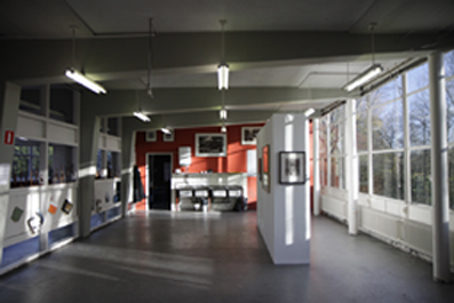
ZET (NL) Photo: Francois Lemieux
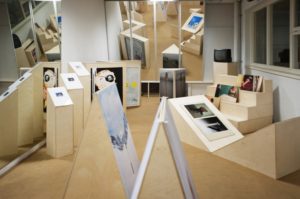
Polly’s Picture Show (NL) Photo: Cassander Eeftinck Schattenkerk
Alexia Mellor shifted her residency in HotelMariaKapel (Netherlands) completely to Kunstvlaai. Mellor and her crew manufactured ‘safety devices’ on demand, which were designed, as she tells me, “to each individual’s personal fears.” They are “visual representations of individual, collective and cultural fears which we all share.”
Some of the classrooms had been transformed into clean white cubes. Others, such as ZET Foundation (Netherlands) had left the original space intact, including bits of beeswax and paper thrown at the ceiling by bored schoolchildren. The ‘raw’ space of ZET worked well with the drawings of Roland Sips.
Besides individual presentations there was a programme of lectures, artist talks, round table discussions, and film screenings with topics such as ‘Film & Video Art in Norway, 1960-90’ Atopia (Norway), ‘The Public Uses of Art and Its Histories’ Master Fine Art, Dutch Art Institute (Netherlands), and ‘Public Funding and Social Imagination’ initiated by Kunstvlaai. Interesting to consult is the publication, A Guide To Amsterdam’s Self-Organized Art Initiatives produced by Amsterdam Dinner Movement (Netherlands) with information about artist-led initiatives. For an overview of all events go to www.kunstvlaai.nl.
I understand that the curators have wanted to replace the model for the cubicle dictated by the old location for one that matches with their curatorial concept. Yet, I am relieved that Kunstvlaai will continue as a nomadic festival and that this particular venue will be a thing of the past. This is not only because of the perplexing floorplan. What I missed on this location was the possibility to step back and have an overview to some extent. I would have been able to see the individual presentations also as a whole. It would have accentuated the fact that Kunstvlaai is indeed more than the sum of its separate parts; it would have complemented, not contradicted, the individuality of Kunstvlaai’s ‘models’.
But aside from this critical note, my experience was positive as the curators did not play it safe. I liked the mix of emerging and more established art and artists. There was room for experimentation and also for reflection on Kunstvlaai’s own history. This edition was proof of Kunstvlaai’s potential. The diversity of attitudes by which artists respond to the cultural climate could be seen and heard here. The festival generated a lot of attention and the spin-off is likely to benefit many. The days when Kunstvlaai ‘was against’ the established institutions are indeed long gone.
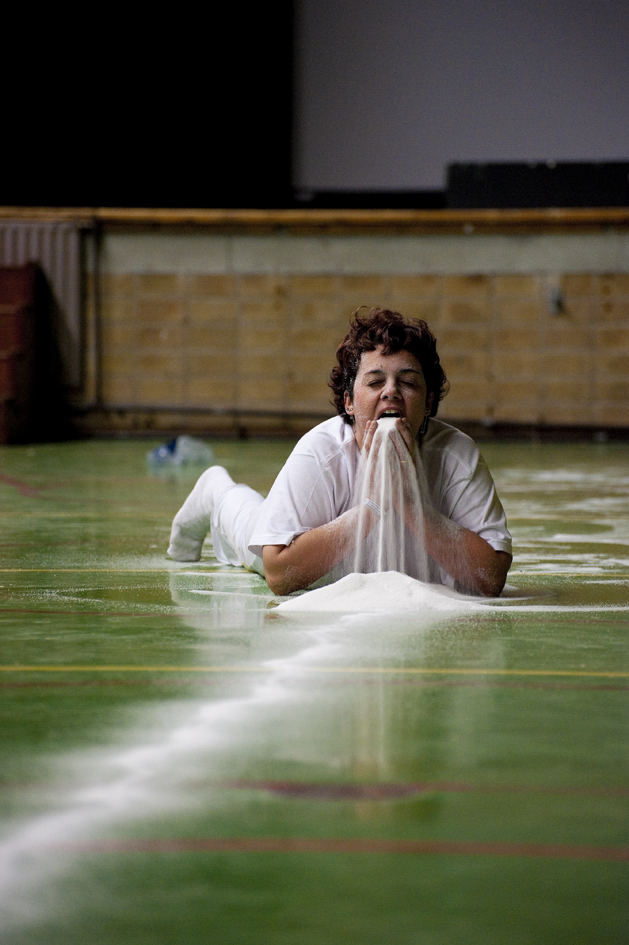
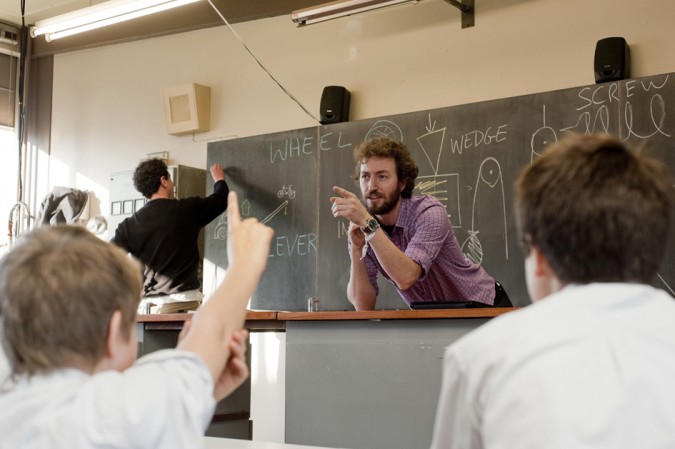
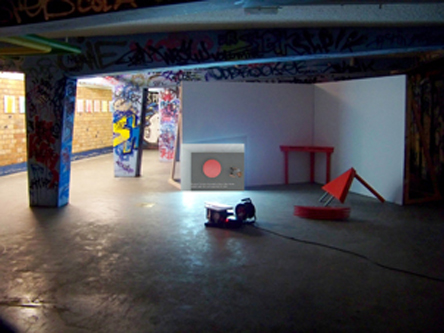
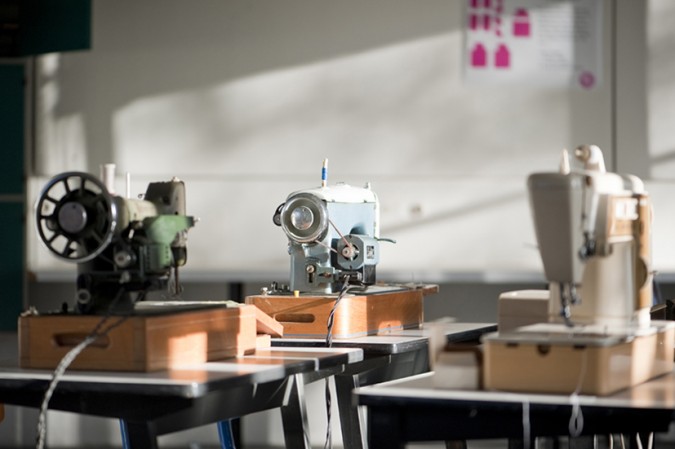
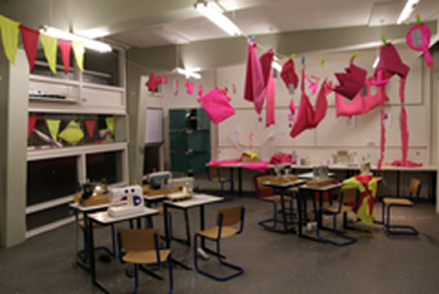
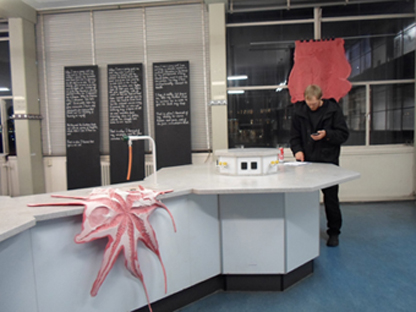
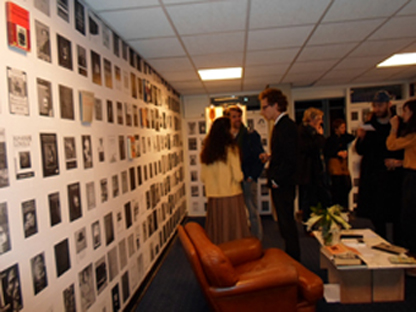
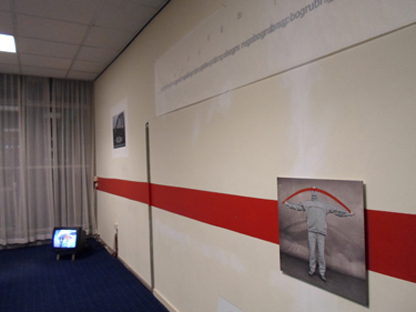
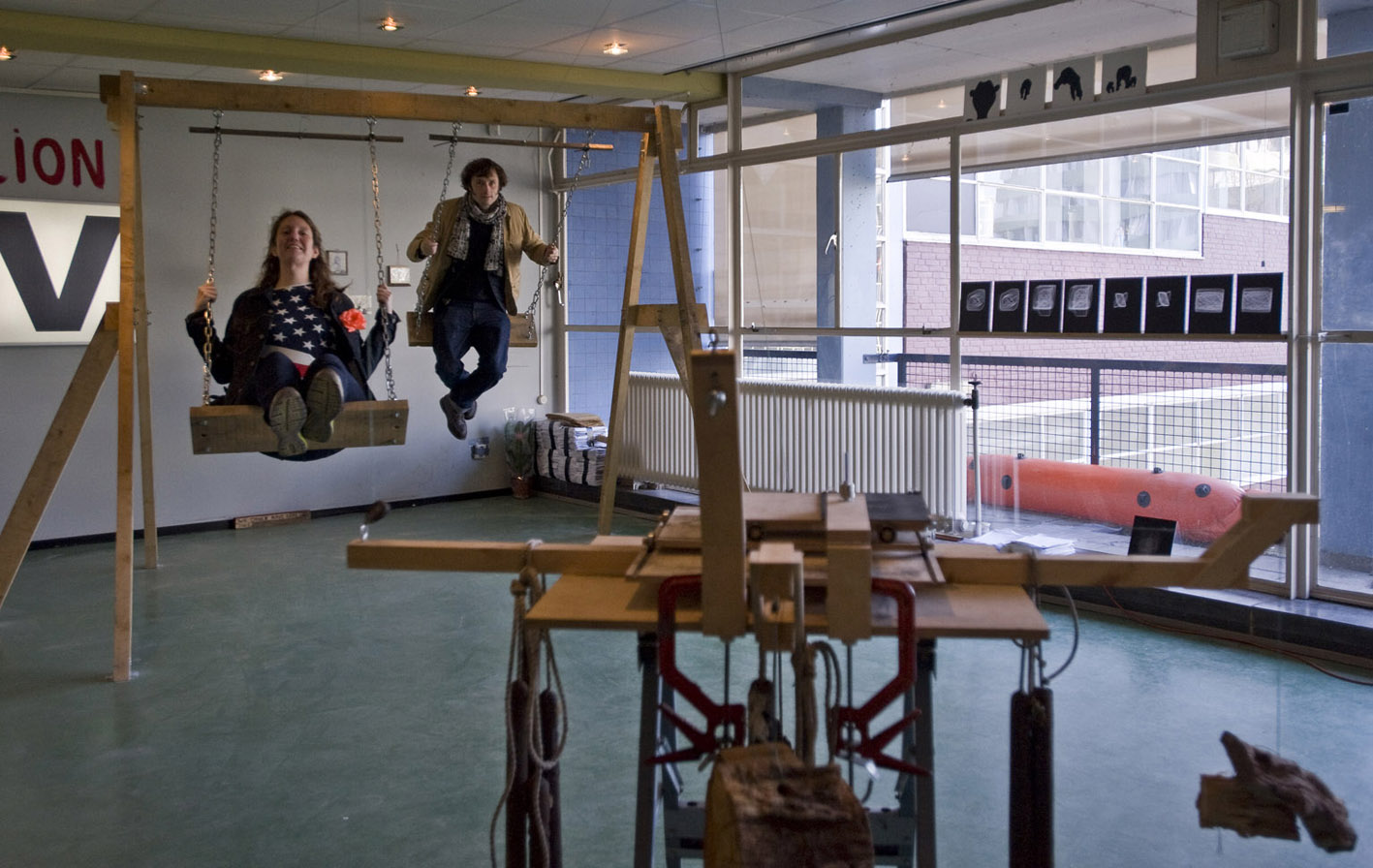






Wish I had visited Kunstvlaai. Dineke Blom has given a review both animating and instructive, for which I’m very grateful, indeed.
A wonderful review that makes me terribly sad to have missed this. Lucidly and elegantly written.